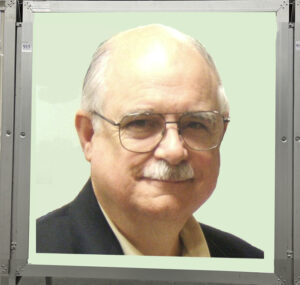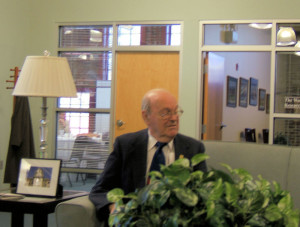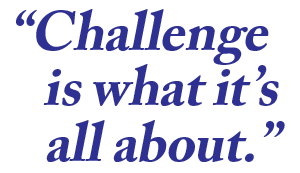Philatelic Exhibiting: Building a Passion
for Knowledge, Acquisition, and Creativity
by John M. Hotchner
I’m a philatelic exhibitor, and the discipline has taught me a great deal about stamp  collecting, but even more about myself. Exhibiting is the creation of philatelic stories highlighting mostly stamps and covers, but sometimes also associated material like photos or news articles. The object is to arrange the material in a pleasing way that encourages viewers to stop at your frames and enjoy (and learn from) your work.
collecting, but even more about myself. Exhibiting is the creation of philatelic stories highlighting mostly stamps and covers, but sometimes also associated material like photos or news articles. The object is to arrange the material in a pleasing way that encourages viewers to stop at your frames and enjoy (and learn from) your work.
National level exhibiting, and much local and regional exhibiting too, takes place as a competition for medal levels and special awards offered by each show and by national level societies, but the medal level part is not competition against other exhibits. Rather, each exhibit is judged against two standards:
- How difficult a task have you set for yourself, and
- Whether your exhibit is the best it can be, in terms of the material used, the logic of the story, and the knowledge presented.
As can well be imagined, putting hours and hours into creating an exhibit often converts the effort from a mere philatelic project into something akin to what you feel for one of your children. And as you might react badly to having one of your children criticized — especially unfairly — it is just so with what judges will have to say about your exhibit. It took a long time for me to understand and internalize that it was the exhibit being critiqued, and not myself.
It took even longer to understand that judges were commenting about four different action areas:
- Problems that are holding an exhibit back from getting to the next level and must be addressed; things like missing philatelic material, difficulty in the flow of the story being told, or incorrect or poorly stated information.
- Suggestions, or ideas for experimenting, that deserve to be considered toward overcoming those problems.
- Areas where the exhibitor might use his or her own knowledge and creativity to come up with better ways to make points that advance the story or the clarity of the story.
- Areas where the judge has personal preferences — often in the realm of exhibit presentation.
There is a tendency to give equal weight to everything a judge says, but exhibitors need to learn to differentiate the “musts” from the “maybes,” and to identify ideas worth pursuing — and what should go into File 13. Judges are human and can make mistakes. They can miss seeing something that is present, misunderstand points being made, or bring their own biases to the table. But exhibitors are also human. Thus, miscommunication is almost inevitable. But exhibitors need to understand that judges are also exhibitors (successful ones!) who have real knowledge to impart, and do what they do to try to be a resource and be helpful.
Early on in my exhibiting career I was certain that my failure to get to Gold was not my fault, but the fault of the judges, who in my view didn’t understand what I was trying to do, didn’t know as much as I did about my exhibit subject, and were too full of themselves to be objective.
 In one especially humiliating instance, the legendary collector and judge Bud Hennig (shown on the left) critiqued my first exhibit (on methods of stamp separation) after the jury he was on dropped it to a Silver medal, after it had gotten several Vermeils (the level under Gold). My feelings were hurt, and my back was up, and his critique, which was extensive, had me thinking “Unfair … I’m not putting up with this. I’m leaving this field, and not coming back.”
In one especially humiliating instance, the legendary collector and judge Bud Hennig (shown on the left) critiqued my first exhibit (on methods of stamp separation) after the jury he was on dropped it to a Silver medal, after it had gotten several Vermeils (the level under Gold). My feelings were hurt, and my back was up, and his critique, which was extensive, had me thinking “Unfair … I’m not putting up with this. I’m leaving this field, and not coming back.”
I put the exhibit on the shelf, and there it sat for about three months. When I did look at it again, I had to admit that Hennig had made quite a few good points, and the old enthusiasm came back to motivate me to work on it some more. In fact, Hennig’s critique, harsh but honest, turned out to be the door I had to walk through to get the exhibit to Gold. And that took some growth on my part.
So here it is nearly 40 years and about 15 exhibits later, and exhibiting is the most fun thing I do in the hobby. It forces me to organize my material, to learn about it in detail, to  present it logically, and to exercise my meager artistic skills as I prepare exhibit pages.
present it logically, and to exercise my meager artistic skills as I prepare exhibit pages.
My most recent efforts are in the fields of Korean War POW Mail, and Bureau of Engraving and Printing Repairs and Rejection Markings. Challenge is what it’s all about — taking a subject that no one else has done before, and creating a base from which others can launch a new interest. For me it is now much more about the story than the medal. Sure, I enjoy getting a nice medal to add to my collection, but the medal is no longer the reason I exhibit.
For those of you who might like to give exhibiting a try, I would recommend going to the website of the American Association of Philatelic Exhibitors, You will find much information about our corner of the hobby, but also a pamphlet titled “How to Get Started in Philatelic Exhibiting.”
Should you wish to comment on this column, or have questions or ideas you would like to have explored in a future column, please write to John Hotchner, VSC Contributor, P.O. Box 1125, Falls Church, VA 22041-0125, or email, putting “VSC” in the subject line.
Or comment right here.



